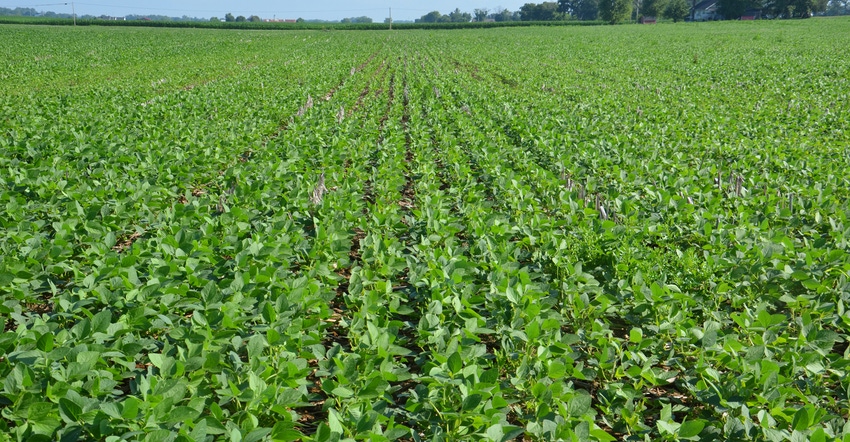
Just because you’re planting soybeans later than usual this year doesn’t mean you can’t still manage for as much yield as possible. Shaun Casteel, Purdue University Extension soybean specialist, says there are management changes you can make to attempt to hold the line on yield loss and capture as much yield potential out of this season as possible.
One thing you can do is carefully consider when to change to shorter-season varieties for your growing area. That will require staying in close contact with your seed dealer and making sure you can get the shorter-season varieties you may need when you need them.
When you change will depend upon where you farm within the state, Casteel says. Here are specific recommendations based upon where you farm.
Northern Indiana. If you live in the northern third of the state and are still planting soybeans, stay with your original variety choice, but prepare to change soon. Casteel suggests going to a variety that is half a maturity group earlier if you’re still planting June 15.
For example, if you’re planting a 3.3 soybean, switch to about a 2.8 maturity if it’s available. Casteel says you should be OK planting with the shorter-season variety through June 30. At that point, you must decide whether to continue planting or stop in northern Indiana.
Remember that parts of east-central Indiana may be more like northern Indiana than central Indiana when it comes to maturity and length of growing season. That’s due to higher altitude compared to the rest of the east-central region. This tends toward later spring frosts and earlier fall frosts.
Central Indiana. For most of central Indiana, including west-central Indiana, Casteel suggests staying the course with your original variety for about another week. He would make the shift to half a maturity group earlier around June 20. So, if you were going to plant a 3.5 maturity variety and you will be planting after June 20, look for 3.0 maturity group varieties.
When switching varieties, make sure the variety you’re getting still has the disease package you need for your area. Casteel believes you can plant through July 5 with an earlier-season variety in central Indiana.
Southern Indiana. You’ve still got time in the southern part of the state, Casteel says. He wouldn’t drop back half a maturity group and plant a shorter-season variety until after June 25 in southern Indiana. If you were going to plant a 3.9 maturity variety and you know you could be planting the last week of June, look for something in the 3.4 maturity range instead, Casteel says. He wouldn’t pull the plug on planting there until after July 10.
Other management factors
Switching to a shorter-season variety if planting gets very late is just one thing you can do to manage for good yields, Casteel says. Especially with late plantings, he strongly advises planting in narrow rows. That includes 15-inch split-rows with a planter.
“Narrow rows aid in canopy closure and sunlight interception,” he says. You need all the sunlight you can get planting so late in the season, he says.
You will also want to increase seeding rates. Casteel recommends upping rates about 15,000 seeds per week for each week of delay in June. For more information about this, click on the related story link above.
You might think soybean seed treatment wouldn’t be as important planting late, but Casteel still recommends seed treatment if field conditions are conducive for disease development. If it’s cool and wet or warm and wet, conditions will favor various diseases, and seed treatments will still help, he says.
Plus, if you’re making changes in rotation, you may be going back with soybeans following soybeans. That tends to also increase disease pressure, he adds.
About the Author(s)
You May Also Like




